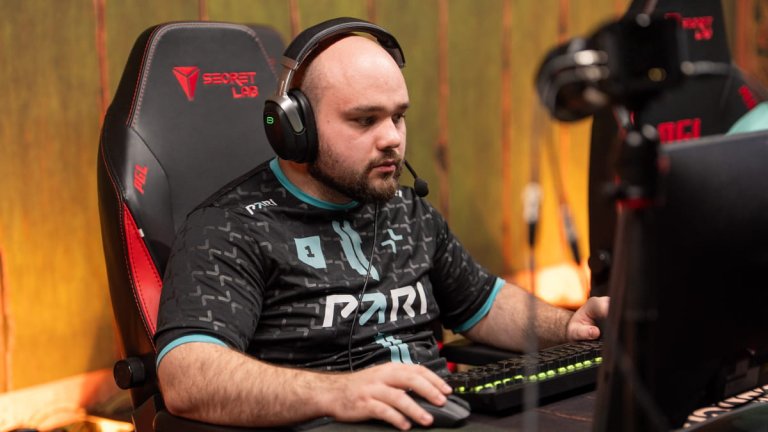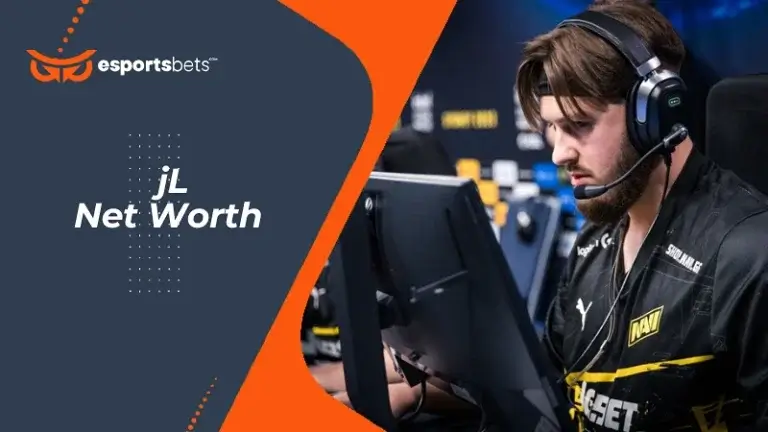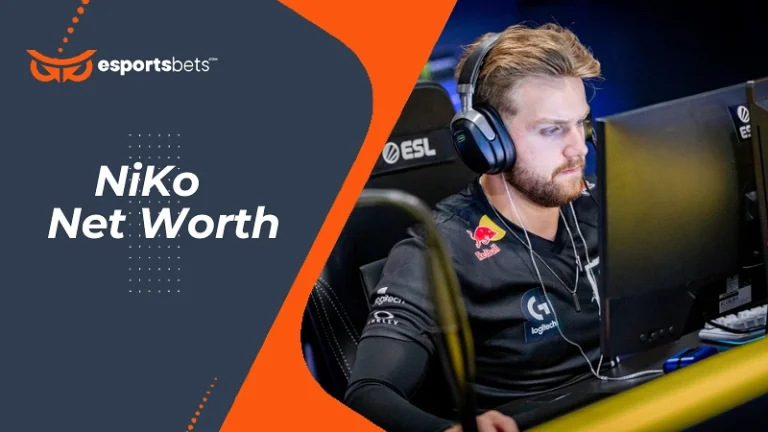You’re In Luck: We’ve Analyzed The Role Of Chance In Dota 2
Every sport enables a certain amount of luck to affect the final outcome of a match; the variance changes with the game.
A referee making a bad call and a successful half-court shot at the buzzer are just two of a plethora of examples of how luck can impact a match’s final result. eSports are no different; luck can make would-be winners into losers, and vice versa.
[toc]From a gambling perspective, knowing the degree to which luck can alter the outcome of a game is vital for determining how reliably the winners can be predicted.
There are, of course, countless ways in which luck can manifest to affect the outcome of a match. Listing every possible way a team or player can get lucky (or unlucky) would be an absurd exercise, eventually devolving into factors such as the likelihood of a player getting ill on the day of a tournament.
A more relevant, feasible way to help potential bettors get some idea of the variance of each game would be to list the various game mechanics of each which are inherently driven by luck. In other words, those game mechanics which rely on random number generation, or something similar in effect, to determine the result of a particular action.
For these types of mechanics, an action will have one kind of effect X%, and another Y% of the time. Whether the result represented by the X% or the Y% occurs is decided by the game itself.
Importance
The importance of understanding the luck factors involved within the mechanics of a game are immense. That there are some mechanics which are decided solely by luck means that two theoretical players who input the exact same keystrokes at the exact same time can experience different results.
There are not enough of these mechanics for a game of Dota 2 to be solely luck driven, but these factors can heavily affect matches with equally skilled teams.
Read Also: Best Dota 2 Players of All Time
Randomized non-hero or item occurrences in Dota 2
There are many random elements in Dota 2, most of which stem from the hero abilities and items in the game.
There are a few notable instances where the random elements are introduced from other sources, such as the map, or the creeps:
- Which runes spawn in the middle of the map.
- A 25% chance to miss an attack made from low-ground to high ground.
- When Roshan respawns (always between 8-11 minutes).
- The damage dealt by towers (between 100-120, then 120-140, then 122-182).
- Gold earned from last-hits on creeps, towers, and other buildings.
Runes
Runes provide players’ characters with stat bonuses, or buff them in some other useful way. Runes spawn at two different points on the map.
There is one type of rune which always spawns, the bounty rune, and five random other types which can spawn with it (in the other spot). These runes spawn in two minute increments, and which spot they occupy of the two possible locations is randomized. There are six types of runes:
- Bounty runes give bonuses to gold and experience.
- Double-Damage runes cause heroes to deal 100% more damage for 45 seconds.
- Haste runes allow heroes to move faster for 25 seconds and ignore slowing effects.
- Invisibility runes give invisibility for 45 seconds, or until attacking or using items.
- Regeneration runes regenerate health and mana for 30 seconds.
- Illusion runes spawn two player-controlled illusions, though they do less damage.
Runes spawn randomly, but never twice in a row (except for bounty runes). The potential value of the right rune at the right time is immense; it can help win a teamfight, or help gain an early lead by destroying the first tower, for example.
They can change the tactics which a player would otherwise use because of the buffs which they grant. Runes can also be bottled for use later, though they “expire” and activate on their own after a time.
Players must choose whether to risk going for the runes, and, if they do, they must be prepared for the possible disadvantages which come with the spawn of either the wrong rune, or the spawn of a rune which a player doesn’t need.
A player using a certain hero may not find much use out of a rune which replicates an ability they have on their own, such as invisibility for a character who can already turn invisible. A player may also have need for a particular rune, such as regeneration or invisibility to avoid danger, only to see double damage.
That the runes spawn at random spots is an additional layer of chance which must be factored in.
Overall, the significance of rune randomness is not too great, but it can absolutely help turn the tide of a fight if certain conditions already exist in a match, and the right rune appears at the right place.
Low ground disadvantage
The game features a 25% chance for ranged heroes to miss their target when attacking from low ground to high ground.
During the early game, heroes will find themselves facing other heroes in the middle lane, with ramps between them. The ramps each descend to a lower path which cuts through the middle of the map. cross this path to get to the other side, and heroes will find themselves venturing to this lower ground as well to attempt last-hits.
This 25% chance can represent the difference between a player getting the gold for a last hit or not, and that potential loss in gold can turn out to be significant under certain conditions. The gold may be needed for the purchase of an important item, and lacking important items has the obvious effect of making the hero in question less powerful.
The middle lane heroes help often kill enemies in other lanes, so it is vital that they upgrade for the sake of a strong early game.
Roshan
One of the most important aspects of Dota 2 is Roshan.
Roshan is the most powerful non-player character in the game. He spawns at one particular place on the map and drops two items: Aegis of the Immortal, and cheese.
The cheese is a restorative item which players can use to gain health and mana back, and it’s the best restorative item in the game. The Aegis grants players an instant second life, allowing them to respawn at full health and mana.
The importance of the Aegis cannot be overstated; it can be the deciding factor in an otherwise close game by shifting the result of a teamfight. Even a single teamfight lost in a close enough game can be the difference between victory and defeat.
The effort to take down Roshan requires most or all of a team, (with the exception of a hero playing as Ursa).
Roshan doesn’t only live one time, however he will respawn every eight to eleven minutes after he is first killed, and the time for respawn is entirely random (within that range). There is also no indication to players when Roshan is respawned.
A team can get lucky and happen upon Roshan just at the time that they’re ready to fight him, or they may get unlucky and he spawns just after a lost teamfight. The impact which a Roshan respawn can have on the game are huge, and this is one random element which can absolutely turn a game if it’s close enough.
A match which is already a blowout will not be too heavily affected by Roshan, but such an overwhelming defeat is rare in the highest level tournament or pro-team play.
Tower damage
The map of Dota 2 is split into three lanes, and each of these three lanes has strategically placed towers along it. These towers are able to shoot projectiles which inflict randomized amounts of damage on hero characters.
Towers are split into tiers – the closer to the base a team’s tower is, the higher its tier is.
They damage players at the following rates:
- Tier 1 Towers: 100-120 damage
- Tier 2 Towers: 120-140 damage
- Tier 3 Towers: 122-182 damage
- Tier 4 Towers: 122-182 damage
Tower damage is most relevant in the early game, where each hit can take a significant chunk out of players, and when players are most consistently dancing just near their reach. Player deaths early on affect characters in all manner of ways, but the most important is that they lose the ability to get last-hits on creeps, and fall behind in their collective gold count.
Towers can also be a catalyst which enables an enemy hero to get a kill and/or assist, and that results both in a loss of last-hit chance as well as a bonus in the gold for the enemy team. This kind of swing early on can be a vital factor in which team wins and loses, for two teams who are closely matched.
The range at which the towers do damage also allows for players to get very lucky and escape with low health, sometimes in the single digits, depending on how an encounter plays out.
A randomized number can be the difference between a player taking off a brief time to heal and a player needing to wait to be respawned back at their base, and that difference can be very significant over the course of a close match.
Randomized gold
One important source of early income for heroes is last-hitting enemy creeps. The player who last-hits a creep will earn a certain amount of gold, and this amount slightly varies depending on the type of creep killed.
Over the course of a full game, however, the number of creeps which will receive a last hit is high, and the range of gold which players can potentially receive is not large.
This is one random element which does not have a clear justification for being random, because the amount of gold players receive will average out to about the same as if there were a static amount for last-hitting a certain kind of creep.
Hero and item-caused randomization
Dota 2 contains many game mechanics which rely on chance to determine if they occur. All of the aforementioned mechanics have some clear percentage which accompanies the likelihood of them occurring or not, and that percentage is static.
Not every game mechanic works this way, though. There are two primary methods which Dota 2’s programming uses to determine chance-driven outcomes:
- True random distribution (includes a listing of the relevant game mechanics)
- Pseudo-random distribution (includes a listing of the relevant game mechanics)
True random distribution is, like in all the aforementioned examples, indicative of a chance-based outcome which has a constant percentage at which it may or may not occur.
When a ranged hero attacks from low to high ground, there is always a 25% chance that the attack will miss. When a player last-hits an enemy creep, there is always an equal chance that one gold value in the range of possible gold values will be rewarded to that player.
A mechanic with pseudo-random distribution, however, starts a player with a certain chance of an action having a particular outcome. For every time that outcome doesn’t occur, the chance of it happening increases, until a percentage ceiling is reached.
When the outcome finally happens, its percentage resets back to a ground level. This makes it so the variance in the number of times an outcome occurs is less than it would be if it were strictly a single percentage.
Each of the aforementioned links give a full listing of the abilities and items which utilize true random and pseudo-random distribution, respectively, as well as some breakdowns about the percentage increases that they generally undergo.
Pseudo-random events generally start at lower percentages than abilities with true random distribution do. A pseudo-random event can be “planned,” in the sense that the longer a player goes without it, the more likely it will go off, so they can try to use it on an enemy hero.
If a player were “planning” their pseudo-random outcome, an accidental trigger of the effect can be extremely detrimental for a subsequent teamfight or encounter which could have otherwise been victorious.
Here is a list of some of the heroes who could have this kind of experience:
- Juggernaut, with Blade Dance
- Phantom Assassin, with Coup de Grace
- Slardar, with Bash
- Faceless Void, with Time Lock
For each of these characters, they have an ability which occurs using pseudo-random distribution from their basic attack. Juggernaut and Phantom Assassin both gain occasional bonuses to their damage when they use their basic attack, while Slardar and Faceless Void gain occasional stun effects on their basic attacks.
A stun in Dota 2 is one of the most valuable effects that any skill can have, and the importance of increased damage is obvious. If either type of effect goes off because a player had to use their basic attack just before a teamfight, the likelihood of it going off again at the best possible time can be diminished, perhaps even to the point that it doesn’t go off at all.
That kind of swing in damage output, or the presence of a stun vs. none, can be a huge difference in who will win a closely contested fight.
Conclusion
Overall, even with all these chance-based factors, it would be difficult to refer to Dota 2 as a luck-driven game. The best teams in the world are consistently winning tournaments.
There are many ways in which a slightly less skilled team can win against a slightly more skilled one, but the impact of luck decreases as the quality disparity between teams increases. Many of the random elements average out over the course of a match to provide players with some value that they can expect for certain outcomes.
Additionally, all players are equally affected by some of these factors; mitigating the negative effects which luck can have is an important part of the game, and part of being a good player.
From a gambler’s perspective, it perhaps means that those betting on esports should be wary when wagering on games between evenly matched opponents, but that is always the case. It is still important to understand why a particular bet may go awry.





















